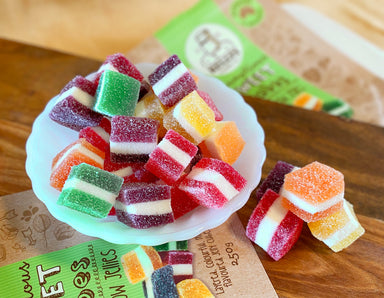I Luv Candi Fundamentals Explained
I Luv Candi Fundamentals Explained
Blog Article
5 Easy Facts About I Luv Candi Shown
Table of ContentsThe Single Strategy To Use For I Luv CandiThe Definitive Guide to I Luv CandiThe smart Trick of I Luv Candi That Nobody is DiscussingThe smart Trick of I Luv Candi That Nobody is Talking AboutThe Buzz on I Luv Candi
We have actually prepared a great deal of company prepare for this sort of task. Here are the usual consumer sections. Client Sector Description Preferences How to Find Them Kids Youthful consumers aged 4-12 Vivid candies, gummy bears, lollipops Partner with neighborhood schools, host kid-friendly occasions Teens Adolescents aged 13-19 Sour sweets, novelty products, trendy treats Engage on social media sites, team up with influencers Parents Grownups with children Organic and much healthier alternatives, sentimental sweets Offer family-friendly promotions, market in parenting magazines Students Institution of higher learning trainees Energy-boosting candies, inexpensive treats Companion with nearby schools, promote throughout examination durations Gift Customers Individuals searching for presents Costs delicious chocolates, gift baskets Produce appealing displays, supply adjustable present alternatives In examining the economic characteristics within our sweet store, we've discovered that consumers generally spend.Monitorings suggest that a normal client frequents the store. Specific periods, such as holidays and unique occasions, see a surge in repeat visits, whereas, throughout off-season months, the regularity might diminish. carobana. Calculating the lifetime value of an average consumer at the sweet-shop, we approximate it to be
With these consider factor to consider, we can reason that the typical revenue per consumer, throughout a year, floats. This figure is pivotal in strategizing company enhancements, marketing undertakings, and consumer retention strategies.(Please note: the numbers defined over act as general quotes and may not specifically show the metrics of your distinct business circumstance - https://www.domestika.org/en/iluvcandiau.) It's something to have in mind when you're composing business plan for your sweet-shop. The most successful consumers for a candy shop are typically family members with young kids.
This market tends to make frequent acquisitions, boosting the store's revenue. To target and attract them, the candy store can utilize vibrant and lively advertising strategies, such as lively displays, appealing promos, and probably even hosting kid-friendly events or workshops. Developing a welcoming and family-friendly atmosphere within the shop can additionally boost the overall experience.
I Luv Candi Things To Know Before You Buy
You can likewise approximate your own profits by applying different assumptions with our economic prepare for a sweet shop. Typical regular monthly revenue: $2,000 This kind of sweet-shop is usually a tiny, family-run company, probably known to residents yet not bring in great deals of visitors or passersby. The store may provide a selection of common sweets and a few homemade treats.
The shop does not normally bring rare or pricey things, concentrating rather on budget friendly treats in order to keep normal sales. Thinking an average costs of $5 per client and around 400 customers per month, the month-to-month income for this sweet shop would certainly be roughly. Typical month-to-month income: $20,000 This sweet-shop take advantage of its tactical location in a hectic metropolitan area, drawing in a a great deal of consumers seeking sweet extravagances as they go shopping.
Along with its varied sweet choice, this shop might likewise sell related products like gift baskets, sweet arrangements, and novelty products, giving numerous earnings streams - camel balls candy. The store's place calls for a greater budget plan for rental fee and staffing but results in greater sales volume. With an estimated ordinary costs of $10 per client and about 2,000 customers monthly, this store could create
The Buzz on I Luv Candi
Found in a significant city and traveler location, it's a big facility, typically topped numerous floorings and perhaps component of a nationwide or global chain. The shop supplies an enormous selection of candies, including exclusive and limited-edition products, and product like branded garments and devices. It's not just a store; it's a location.
These attractions help to draw thousands of visitors, significantly raising potential sales. The operational expenses for this sort of shop are considerable due to the area, dimension, personnel, and features offered. However, the high foot web traffic and average investing can bring about significant profits. Assuming a typical acquisition of $20 per client and around 2,500 consumers per month, this flagship store could accomplish.
Category Examples of Costs Average Month-to-month Cost (Range in $) Tips to Lower Expenditures Lease and Utilities Store lease, electricity, water, gas $1,500 - $3,500 Consider a smaller sized area, negotiate rent, and use energy-efficient lights and devices. Supply Candy, snacks, packaging products $2,000 - $5,000 Optimize supply management to decrease waste and track prominent things to prevent overstocking.
Marketing and Advertising and marketing Printed materials, on-line ads, promos $500 - $1,500 Concentrate on economical digital advertising and marketing and make use of social media platforms free of charge promotion. sunshine coast lolly shop. Insurance policy Business obligation insurance $100 - $300 Look around for competitive insurance coverage prices and consider bundling plans. Tools and Upkeep Sales register, show racks, repair work $200 - $600 Buy previously owned tools when possible and carry out regular maintenance to extend devices lifespan
Our I Luv Candi PDFs
Charge Card Processing Fees Charges for processing card settlements $100 - anonymous $300 Negotiate reduced processing charges with repayment processors or explore flat-rate options. Miscellaneous Office supplies, cleansing products $100 - $300 Get wholesale and look for discounts on materials. A sweet-shop becomes successful when its overall revenue surpasses its total fixed costs.

A large, well-located sweet shop would clearly have a greater breakeven point than a little shop that doesn't need much income to cover their costs. Interested concerning the success of your sweet-shop? Try our straightforward economic strategy crafted for sweet stores. Just input your own assumptions, and it will aid you compute the amount you require to make in order to run a rewarding organization.
Our I Luv Candi Ideas

Financial recessions that lower customer investing can impact candy store sales and profitability, making it essential for sweet stores to handle their expenses and adapt to changing market problems to stay lucrative. These threats are frequently consisted of in the SWOT analysis for a sweet-shop. Gross margins and internet margins are crucial indicators utilized to assess the productivity of a sweet-shop service.
Essentially, it's the revenue staying after deducting costs straight associated to the candy inventory, such as acquisition expenses from suppliers, production costs (if the candies are homemade), and staff wages for those entailed in production or sales. Internet margin, conversely, factors in all the expenditures the sweet shop sustains, consisting of indirect prices like administrative expenses, marketing, rental fee, and taxes.
Candy stores typically have an ordinary gross margin.For instance, if your sweet store makes $15,000 per month, your gross profit would be about 60% x $15,000 = $9,000. Think about a candy shop that offered 1,000 candy bars, with each bar priced at $2, making the complete earnings $2,000.
Report this page